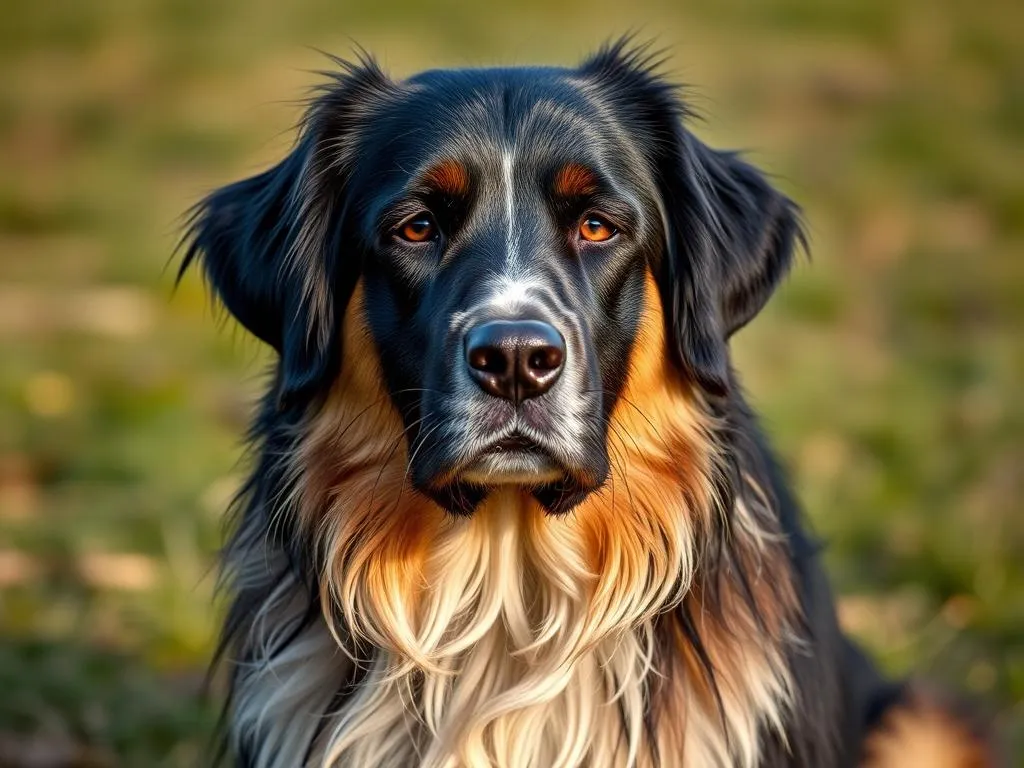
Introduction
When it comes to dog breeds, each one possesses unique traits and characteristics that make them special. Understanding these differences is not only important for potential pet owners but also enriches our appreciation for these loyal companions. Among the many breeds, the Landseer Dog stands out due to its impressive history, striking appearance, and gentle temperament.
Originating from the Newfoundland breed, the Landseer Dog has made a name for itself, particularly in maritime environments. This breed is not just recognizable by its distinctive markings but is also celebrated for its friendly and protective nature. The purpose of this article is to educate readers about the Landseer Dog, including insights into its care, training, and suitability as a family pet.
Understanding Dog Breeds
Definition of Dog Breeds
A dog breed is defined by specific traits that are consistently passed down through generations. These traits encompass behavior, appearance, and health predispositions. Understanding these characteristics is essential, as they influence how dogs behave in various situations, their adaptability to different environments, and their overall health.
Factors Influencing Dog Breeds
The genetic background of a dog plays a significant role in defining its breed characteristics. Breeding history also contributes, with some breeds developed for specific tasks, such as herding, hunting, or companionship. The Landseer Dog, for instance, was bred for water rescue and companionship, making it a unique addition to the canine world.
Overview of Popular Dog Breeds
Other popular dog breeds include the Labrador Retriever, Golden Retriever, and German Shepherd. Each breed comes with its own set of traits. The Landseer Dog can be compared to these breeds, particularly in terms of its friendly disposition and loyalty, but it also has unique features that set it apart.
The Landseer Dog: An Overview
History and Origin
The Landseer Dog has its roots deeply embedded in the history of the Newfoundland breed. Originally bred in the 18th century, these dogs were named after the famous painter Sir Edwin Landseer, who often depicted them in his artwork. The Landseer Dog played a vital role in maritime life, often assisting fishermen and performing water rescues. Their impressive swimming abilities and strong build made them invaluable companions in coastal communities.
Physical Characteristics
The Landseer Dog is a large and powerful breed, typically weighing between 100 to 150 pounds. Males generally stand between 28 to 32 inches tall, while females are slightly smaller. This breed is distinguished by its striking black and white coat, which is thick and water-resistant. Their distinctive markings, particularly the black patch over the eye, give them a regal appearance.
Temperament and Behavior
The temperament of the Landseer Dog is one of its most appealing traits. Known for being gentle, friendly, and affectionate, these dogs are excellent companions for families. They are known to interact well with children and other pets, showcasing their playful and loyal nature. Additionally, they have a protective instinct, making them natural guardians for the home.
Care and Maintenance of the Landseer Dog
Nutrition
Providing the right nutrition is crucial for the health of your Landseer Dog. A balanced diet should consist of high-quality dog food that meets their nutritional needs, including protein, fats, and carbohydrates. Portion control is essential to prevent obesity, which can be a concern for larger breeds. It’s recommended to feed them twice a day and monitor their weight regularly.
Grooming Requirements
The grooming needs of the Landseer Dog can be demanding due to their thick coat. Regular brushing is necessary to prevent matting and control shedding, especially during seasonal changes. It’s advisable to groom them at least once a week. Additionally, don’t overlook dental care; regular brushing and dental treats can help maintain oral health.
Exercise Needs
The Landseer Dog is an active breed that requires regular exercise to stay healthy and happy. A daily routine of at least an hour of exercise, including walks, playtime, and swimming, is recommended. Mental stimulation is equally important; interactive toys and training sessions can help keep their minds sharp.
Training the Landseer Dog
Basic Training Techniques
Training your Landseer Dog should begin early, focusing on positive reinforcement methods. These dogs are intelligent and eager to please, making them relatively easy to train. Socialization is also critical; exposing them to various environments, people, and other pets can help develop their well-rounded behavior.
Advanced Training Opportunities
The Landseer Dog has great potential for advanced training, including service dog training. Their natural swimming abilities make them suited for water rescue training, which not only provides physical exercise but also mental engagement. Enrolling them in specialized classes can further enhance their skills.
Common Behavioral Issues
Like any breed, the Landseer Dog may encounter behavioral issues such as separation anxiety or excessive barking. Consistency in training and patience are key to addressing these problems. If issues persist, seeking help from a professional trainer can provide valuable guidance.
Health Considerations
Common Health Issues
While the Landseer Dog is generally healthy, certain hereditary health issues may arise. Common problems include hip dysplasia, heart conditions, and certain skin disorders. Regular veterinary check-ups are essential to monitor their health and catch any potential issues early.
Preventative Care
Preventative care is crucial for the Landseer Dog. Adhering to a vaccination schedule and keeping up with routine health screenings can significantly impact their overall health. Additionally, spaying or neutering is recommended to prevent certain health issues and unwanted litters.
Lifespan and Aging
The average lifespan of a Landseer Dog ranges from 8 to 12 years. As they age, their care needs may change. Providing joint supplements, maintaining a healthy diet, and ensuring they have comfortable resting areas can help improve their quality of life in their senior years.
The Landseer Dog as a Family Pet
Suitability for Different Lifestyles
The Landseer Dog is well-suited for various living situations. While they thrive in homes with large yards where they can run and play, they can adapt to apartment living if given ample exercise. Their gentle demeanor makes them excellent companions for families with children and other pets.
Adoption vs. Buying from Breeders
When considering adding a Landseer Dog to your family, you have the option of adopting from shelters or purchasing from breeders. Adoption can be a fulfilling experience, providing a home to a dog in need. If you choose to buy from a breeder, it’s essential to research and find a reputable source to ensure the health and well-being of the puppy.
Testimonials and Personal Experiences
Many Landseer Dog owners share positive experiences, highlighting their dogs’ friendly nature and loyalty. Community support for Landseer enthusiasts is robust, with various online forums and local clubs available for owners to connect and share their experiences.
Conclusion
In summary, the Landseer Dog is a remarkable breed that excels in companionship, loyalty, and protective nature. With a rich history and unique characteristics, they stand out among dog breeds. Potential owners are encouraged to consider the Landseer Dog for their families, as they can bring joy, love, and a sense of protection to any household. Understanding their care and training needs will ensure a fulfilling relationship with this gentle giant.
References
- Understanding Dog Breeds: Characteristics and Traits
- History and Development of the Landseer Dog
- Health and Care of Large Dog Breeds
- Training Techniques for the Landseer Dog and Other Breeds
- Community Resources for Landseer Dog Owners









